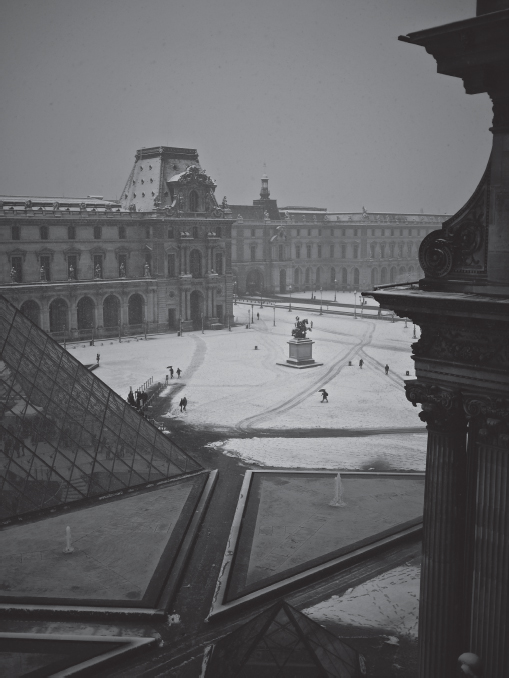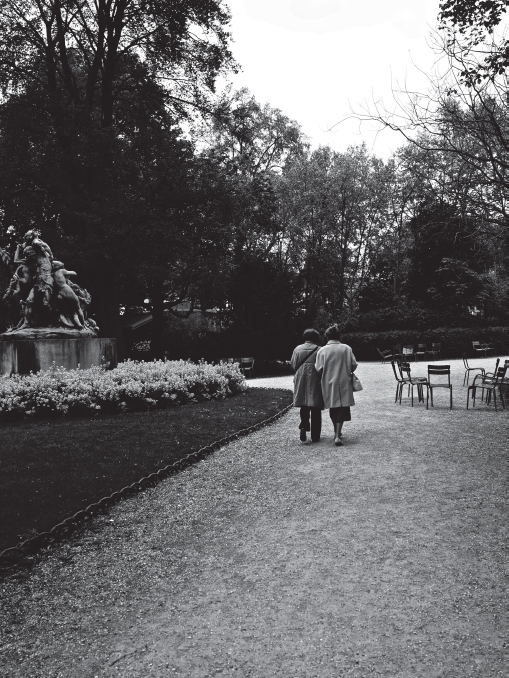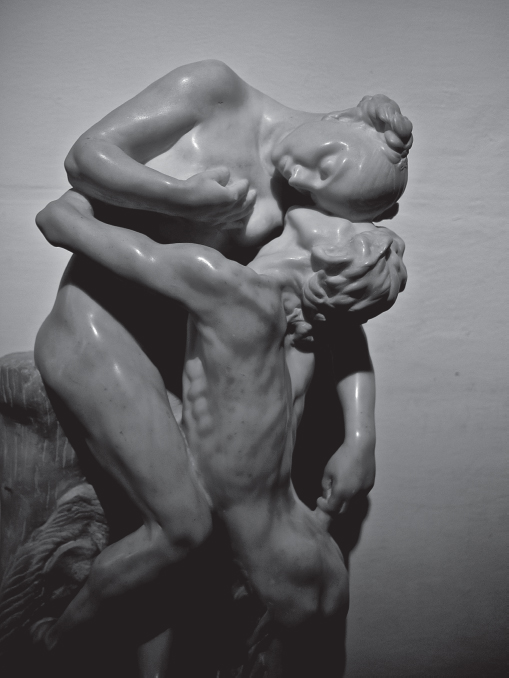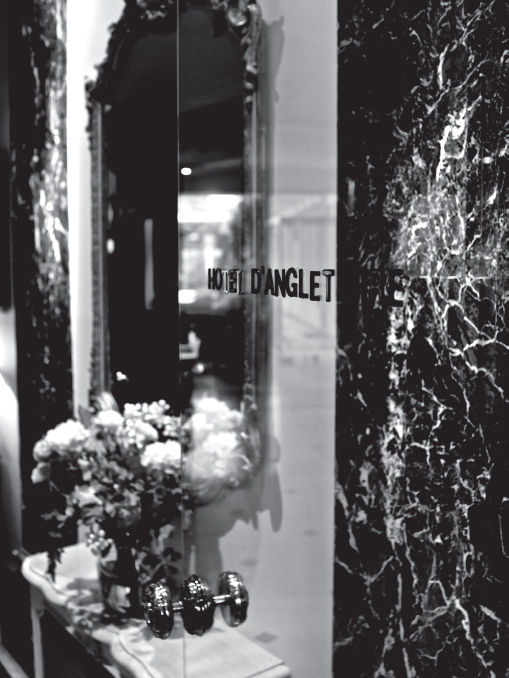
V
Invitation
A Few Places to Consider While in Hemingway’s Paris
Paris wishes to be seen, experienced, and remembered as a city that has weathered the numerous elements of time beautifully. The modern world, no matter year or invention, accepts its place . . . seemingly bowing to this historically profound city. Scholars, for decades, have missed seeing and feeling the Paris that surrounded Hemingway in the early 1920s. They claim his city is gone. But this claim is not true, and if the visitor chooses his steps carefully by moving away from worn paths and walking close to the water’s edge and down quaint side streets and through open doors and up winding stairwells and looks out of windows and stands upon balconies and sees with fresh eyes the avenues and boulevards and rooftops and cafes and restaurants and gardens and statues and fountains and museums that fill this city with wonder and significance—then, he touches the past through the present and can feel the city that inspired Hemingway and the city that presented for him a concentrated and artistic education. In the spirit of Hemingway’s famous iceberg metaphor, the following few pages present the visitor with yet one-eighth of his cherished Paris . . . with the hope and the promise that one feels the remaining seven-eighths.

Louvre
The Walks . . .
In Paris, destinations are filled along the way with small, serendipitous images. Whether walking in solitude or with someone, the city’s enduring physical beauty will surprise and imprint itself upon one’s memory. Hemingway used the city, its boulevards and streets and pathways, to both inspire and compose himself. Life as a young writer surrounded by the Modernist experiment was challenging. The loveliest walks, those that easily conjure up impressions of Hemingway’s city, can be experienced in the Luxembourg, the Royal, and the Tuileries gardens. Very little has changed over the decades within these gardens, and much of the landscape reflected in Hemingway’s prose is gained by a simple stroll. Hadley, too, used these gardens, just blocks from her Left Bank apartment, for the fresh air and vast space they afforded both her and Bumby. The walkways along any part of the Seine, and the circumnavigating of the Île Saint-Louis, present yet further opportunities to connect with the past. Walking throughout this city, under its dramatic sky, is always significant and is symbolic of Hemingway’s time in Paris.

Jardin du Luxembourg
The Museums . . .
Hemingway was learning and absorbing so very much while enveloped in the hallways, and in the art itself, of the many museums and salons that dot the landscape of Paris. To create human emotion on canvas or through stone, moved and touched Hemingway. Like Rodin’s sculptures, Hemingway’s prose, once chiseled down, was simple and direct and emotionally powerful. These museums became classrooms for him. The Louvre, with its lavish and impressive collection of the Masters, stood as a strong foundation to Hemingway, while the d’Orsay, with its Left Bank prominence, reminded Hemingway of the endless possibilities of artistic expression. And, situated quietly behind the d’Orsay, on the lovely Rue de Varenne, is perhaps the most romantic of all museums in Paris, the Musée Rodin. Once the home and workplace of Rodin himself, the visitor cannot help but feel like a personal guest of this magnificent sculptor. Expressed in stone and bathed in natural light, Rodin’s art stirred Hemingway’s mind while elevating his prose. Hemingway knew well that within art, all subjects and disciplines were revealed.

Rodin’s Ccamille Claudel
The Cafés, Restaurants and Bars . . .
Much of Hemingway’s work was framed from within the many cafés, restaurants, and bars that line the streets of Paris and whose tables cascade onto sidewalks. To breakfast at La Dôme or Café de Flore, to lunch at La Closerie des Lilas or Brasserie Lipp, to dine at Lapérouse or Le Tastevin, and to drink at The Bar Hemingway located in the Ritz or the Bar 228 at Le Meurice is to see people and activity from the proper distance and through Hemingway’s frame. A fondness for good food and drink, and a desire for the right and true setting from which to observe and document life, was a strong and lasting requirement of Hemingway’s and one he greatly coveted. With such variety from which to choose, any place is right and memorable and very much in keeping with Hemingway’s requirements, as long as it contains the proper lighting, polished service, the best of food and beverage, and, if one wishes to write one’s own true sentence, a pen and blank sheet of paper.

Left Bank restaurant
The Hotels . . .
If the composition of a sentence must work to express a complete thought, then the composition of one’s hotel room must allow that thought to present itself. For Hemingway, hotels were an extension of the cafes, and he would use them for writing, collaboration, celebration, consumption, escape, and even to inspire setting, as in his short piece, “Cat in the Rain.” One needs an atmosphere that is simple and clear and clean, and that is sympathetic to the complexities of the traveler and of this city. For Right Bank hotels, one will do well by checking into the regal Hôtel Brighton or the historic Hôtel du Louvre or Hemingway’s coveted Ritz, as each keep one close to his Paris. The Left Bank, where Hemingway lived with his adoring wife, Hadley, has the artful Hôtel de l’Academie Saint Germain and the enchanting Hôtel Melia Le Colbert and, still thriving, the first hotel where Ernest and Hadley stayed in 1921, the Hôtel D’Angleterre. These hotels present one with the peace of mind necessary to process the reflections and thoughts that, at the end of a day, swirl around this city and around Ernest Hemingway.

Hôtel D’Angleterre